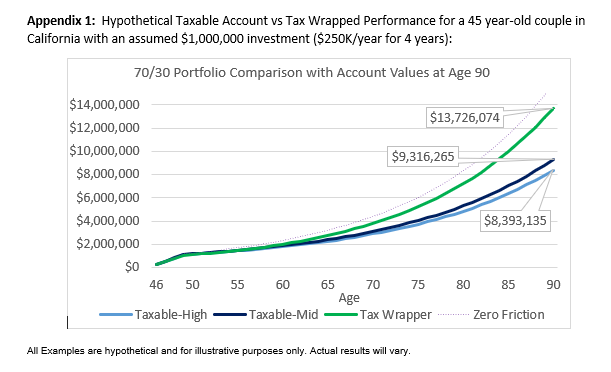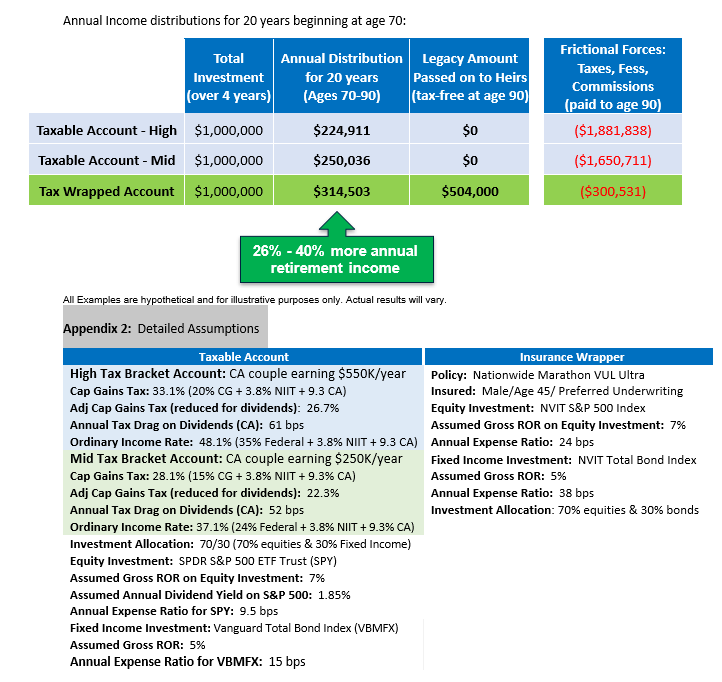
[ad_1]
Lowering the quantity of friction occurring in an funding portfolio is probably the one easiest way to enhance efficiency, however, surprisingly, it’s also one of many least utilized. Listed under is a fundamental step-by-step course of to assist reduce among the frictional forces present in a typical retirement funding portfolio.
Step 1: Scale back Fund Charges
Take an in depth take a look at fund charges throughout all funding accounts (brokerage accounts, 401(ok)’s, IRAs, and many others.) and examine them with decrease price choices. Passively managed index funds and ETFs usually ship virtually equivalent returns in relation to their underlying index, so discovering one on the lower-end of the expense spectrum is beneficial. For actively managed funds, analyze whether or not the fund’s efficiency warrants the upper administration charges. Most often, it doesn’t. Actively managed funds have underperformed relative to their corresponding passive indexes 92.1% of the time since 1991. Along with underperforming, actively managed funds usually generate better tax publicity on account of greater funding turnover. Morningstar could be an efficient useful resource for fund price and tax-efficiency evaluation.
Step 2: Analyze Advisor Bills
Look at the charges being charged by your monetary advisor. Advisory bills have come down significantly with many now charging as little as 50 foundation factors (0.5%) on property underneath administration (AUM) in addition to others billing on an annual flat-fee foundation. If paying round 1% or better, it is best to assess the worth being offered by your present advisor and probably attempt to negotiate a decrease price, a flat price or just search for another. Current development in fintech and robo-advisory corporations has added all kinds of lower-cost choices to {the marketplace}.
Step 3: Restrict Tax Publicity
Divide investable property into three duration-based silos: (1) short-to-mid-term, (2) mid-to-long-term, and (3) long-term solely. The long-term portion ought to be supposed for retirement spending and legacy property that will probably be handed all the way down to the subsequent technology. For the long-term silo, examine a standard taxable account with an equivalent funding allocation positioned inside a tax-free insurance coverage wrapper. When designed correctly, the insurance coverage protected portfolio can successfully scale back tax friction and outperform the taxable equal by a substantial quantity. Components to look at when making this resolution embody federal/state tax charges and the general well being of the investor. Calculating web outcomes for a taxable fairness funding could be considerably complicated as a result of taxes on dividends and capital good points upon liquidation (adjusted for dividends) should each be taken into consideration. These calculations and detailed comparisons are included under.
Step 4: Assess Outcomes
Examine the web efficiency of the Zero Friction adjusted portfolio with that of the unique one. As a rule of thumb, reducing 50 bps (0.5%) per yr in friction over a 30-year funding horizon will generate roughly 15% extra earnings in retirement. Lowering friction by 100 bps (1%) will increase earnings by ~30%. The principle takeaway being that eliminating even small quantities of friction can ship measurable outcomes when achieved over longer-term funding intervals.
Jason Chalmers is a Director at Cohn Monetary Group.


[ad_2]